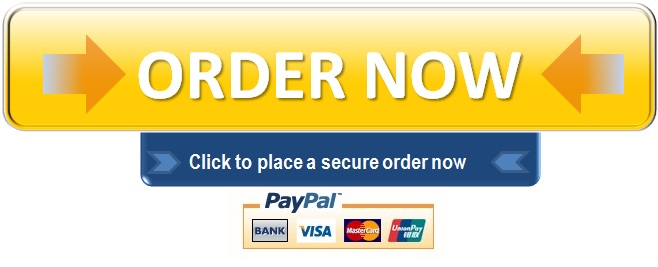FIND A SOLUTION AT Academic Writers Bay
Description
Conflict can have a minor or major impact on individuals, teams and organizations. The assessment below identifies your use of the 5 conflict management styles in your text (p.673-675).
Think about a conflict you have experienced in your personal life or at work and complete the assessment. Create a pdf of your assessment results or paste it into a word document and
1) upload it as an assignment
2) post to the discussion board a description of the personal or work conflict you used in completing the conflict assessment, your most prevalent conflict management style use an example that illustrates it, whether it is successful for you and if you believe other styles would be of benefit for your leadership
3) reply to one post by another student (a short paragraph)
https://www.waldenu.edu/connect/newsroom/walden-news/2017/0530-whats-your-conflict-management-style
https://tools.mheducation.ca/college/mcshane4/student/olc/4obm_sa_13.html
* For #2 and 3, please write in 1st person.
* Here is the student’s discussion post below to reply.
Student’s post:
The conflict situation that I used for my assessment is the debate of cooking techniques and styles that happens in kitchens. I have been a cook for the past 5 years and have an associates in culinary arts. No matter the experience someone has there is always a debate in kitchens on how cooks like to go about their days and cook various items. Every cook has their habits, tendencies and biases, which creates quite the debate amongst cooks and sometimes the chefs in some cases. My most prevalent management style is competing, I tend to be competitive and sometimes defensive in relation to my style of cooking. A basic example of this would be whether when cooking a steak over a broiler or pan seared has better flavor. This is a classic debate that cook and chefs all have their own opinion on. The kitchen can be a competitive and hostile environment depending on the staff, in some cases this competitive conflict management is necessary. My style is usually successful however, I can be accommodating as well as this is my second most prevalent style. I’m open to others and accepting of a more efficient methods that the more experienced may know of. I believe others can benefit from my confidence in my style and experience. Leaders must be confident, when I train others at work individuals benefit from leaders who can confidently explain what is going on and why.
Unformatted Preview
Chapter 16 Skills for Optimizing Leadership as Situations Change 673 Possible Effects of Conflict HIGHLIGHT 16.1 Possible Positive Effects of Conflict Increased effort. Feelings get aired. Better understanding of others. Impetus for change Better decision making. Key issues surface. Critical thinking stimulated. Possible Negative Effects of Conflict Reduced productivity Decreased communication. Negative feelings. Stress. Poorer decision making. Decreased cooperation. Political backstabbing. Conflict Resolution Strategies In addition to spending time understanding and clarifying positions, sepa- rating people from the problem, and focusing on interests, leaders can use five strategies or approaches to resolve conflicts. Perhaps the best way to differentiate between these five strategies is to think of conflict resolution in terms of two independent dimensions: cooperativeness versus uncoop- erativeness and assertiveness versus unassertiveness (see Figure 16.2). Parties in conflict vary in their commitment to satisfy the other’s concerns, but they also vary in the extent to which they assertively stand up for their own concerns.21 Thus conflict resolution can be understood in terms of how cooperative or uncooperative the parties are and how assertive or un- assertive they are. Using this two-dimension scheme, Thomas described five general approaches to managing conflict: 1. Competition reflects a desire to achieve one’s own ends at the expense of someone else. This is domination, also known as a win-lose orientation. 2. Accommodation reflects a mirror image of competition-entirely giving in to someone else’s concerns without making any effort to achieve one’s own ends. This is a tactic of appeasement. 3. Sharing is an approach that represents a compromise between domina- tion and appeasement. Both parties give up something, yet both parties get something. Both parties are moderately, but incompletely, satisfied. 4. Collaboration reflects an effort to fully satisfy both parties. This is a problem-solving approach that requires the integration of each party’s concerns. 5. Avoidance involves indifference to the concerns of both parties. It reflects a withdrawal from or neglect of any party’s interests. 674 Part Four Focus on the Situation Competitive (domination) Assertive Collaborative (integration) FIGURE 16.2 Five Conflict- Handling Orientations, Plotted According to the Parties’ Desire to Satisfy Own and Other’s Concerns Source: Modified and reproduced by special permission of the Publisher, CPP, Inc., Mountain View, CA 94043 from the Thomas Kilmann Conflict Mode Instrument by Kenneth W. Thomas and Ralph H. Kilmann. Copyright 1974, 2002 by CPP, Inc. All rights reserved. Further reproduction is prohibited without the Publisher’s written consent. Party’s desire to satisfy own concern Sharing (compromise) Unassertive Avoidant Accommodative (neglect) (appeasement) Uncooperative Cooperative Party’s desire to satisfy other’s concern Does one of these approaches seem clearly better than the others to you? Each of them does, at least, reflect certain culturally valued modes of behavior.23 For example, the esteem many people hold for athletic, busi- ness, and military heroes reflects our cultural valuation of competition. Valuation of a pragmatic approach to settling problems is reflected in the compromising approach. Cultural values of unselfishness, kindness, and generosity are reflected in accommodation, and even avoidance has roots in philosophies that emphasize caution, diplomacy, and turning away from worldly concerns. These cultural roots to each of the approaches to managing conflict suggest that no single one is likely to be right all the time. There probably are circumstances when each of the modes of con- flict resolution can be appropriate. Rather than seeking a single best ap- proach to managing conflict, it may be wisest to appreciate the relative advantages and disadvantages of all the approaches, as well as the cir- cumstances when each may be most appropriate. A summary of experi- enced leaders’ recommendations for when to use each strategy is presented in Highlight 16.2. Finally, winning a negotiation at your counterpart’s expense is likely to be only a short-term gain. Leaders should attempt to work out a resolution Chapter 16 Skills for Optimizing Leadership as Situations Change 675 Situations in Which to Use the Five Approaches to Conflict Management HIGHLIGHT 16.2 AVOIDING COMPETING 1. When an issue is trivial or more important issues 1. When quick, decisive action is vital—such as are pressing. emergencies. 2. When you perceive no chance of satisfying your 2. On important issues where unpopular actions concerns. need implementing-cost cutting, enforcing 3. When potential disruption outweighs the bene- unpopular rules, discipline. fits of resolution. 3. On issues vital to company welfare when you 4. To let people cool down and regain perspective. know you’re right. 5. When gathering information supersedes imme 4. Against people who take advantage of noncom- diate decisions. petitive behavior. 6. When others can resolve the conflict more ef- fectively. COLLABORATING 7. When issues seem tangential to or symptomatic 1. To find an integrative solution when both sets of of other issues. concerns are too important to be compromised. 2. When your objective is to learn. ACCOMMODATING 3. To merge insights from people with different 1. When you find you are wrong—to allow a better perspectives. position to be heard, to learn, and to show your 4. To gain commitment by incorporating concerns reasonableness. into a consensus. 2. When issues are more important to others than 5. To work through feelings that have interfered yourself—to satisfy others and maintain cooper- ation. with a relationship 3. To build social credits for later issues. COMPROMISING 4. To minimize loss when you are outmatched and 1. When goals are important, but not worth the losing. effort or potential disruption of more assertive 5. When harmony and stability are especially im. modes. portant. 2. When opponents with equal power are commit- 6. To allow subordinates to develop by learning ted to mutually exclusive goals. from mistakes. 3. To achieve temporary settlements of complex Source: K. W. Thomas, “Toward Multidimensional values issues. in Teaching: The Example of Conflict Management,” 4. To arrive at expedient solutions under time Academy of Management Review 2, no. 3 (1977). pressure. pp. 484-90. Copyright © 1977 Academy of Manage 5. As a backup when collaboration or competition ment, via Copyright Clearance Center. is unsuccessful.
- WE OFFER THE BEST CUSTOM PAPER WRITING SERVICES. WE HAVE DONE THIS QUESTION BEFORE, WE CAN ALSO DO IT FOR YOU.
- Assignment status: Already Solved By Our Experts
- (USA, AUS, UK & CA PhD. Writers)
- CLICK HERE TO GET A PROFESSIONAL WRITER TO WORK ON THIS PAPER AND OTHER SIMILAR PAPERS, GET A NON PLAGIARIZED PAPER FROM OUR EXPERTS
QUALITY: 100% ORIGINAL PAPER – NO PLAGIARISM – CUSTOM PAPER
Why Choose Us?
- 100% non-plagiarized Papers
- 24/7 /365 Service Available
- Affordable Prices
- Any Paper, Urgency, and Subject
- Will complete your papers in 6 hours
- On-time Delivery
- Money-back and Privacy guarantees
- Unlimited Amendments upon request
- Satisfaction guarantee
How It Works
- Click on the “Place Your Order” tab at the top menu or “Order Now” icon at the bottom and a new page will appear with an order form to be filled.
- Fill in your paper’s requirements in the “PAPER DETAILS” section.
- Fill in your paper’s academic level, deadline, and the required number of pages from the drop-down menus.
- Click “CREATE ACCOUNT & SIGN IN” to enter your registration details and get an account with us for record-keeping and then, click on “PROCEED TO CHECKOUT” at the bottom of the page.
- From there, the payment sections will show, follow the guided payment process and your order will be available for our writing team to work on it.
About AcademicWritersBay.com
AcademicWritersBay.com is an easy-to-use and reliable service that is ready to assist you with your papers 24/7/ 365days a year. 99% of our customers are happy with their papers. Our team is efficient and will always tackle your essay needs comprehensively assuring you of excellent results. Feel free to ask them anything concerning your essay demands or Order.
AcademicWritersBay.com is a private company that offers academic support and assistance to students at all levels. Our mission is to provide proficient and high quality academic services to our highly esteemed clients. AcademicWritersBay.com is equipped with competent and proficient writers to tackle all types of your academic needs, and provide you with excellent results. Most of our writers are holders of master’s degrees or PhDs, which is an surety of excellent results to our clients. We provide assistance to students all over the world.
We provide high quality term papers, research papers, essays, proposals, theses and many others. At AcademicWritersBay.com, you can be sure of excellent grades in your assignments and final exams.


